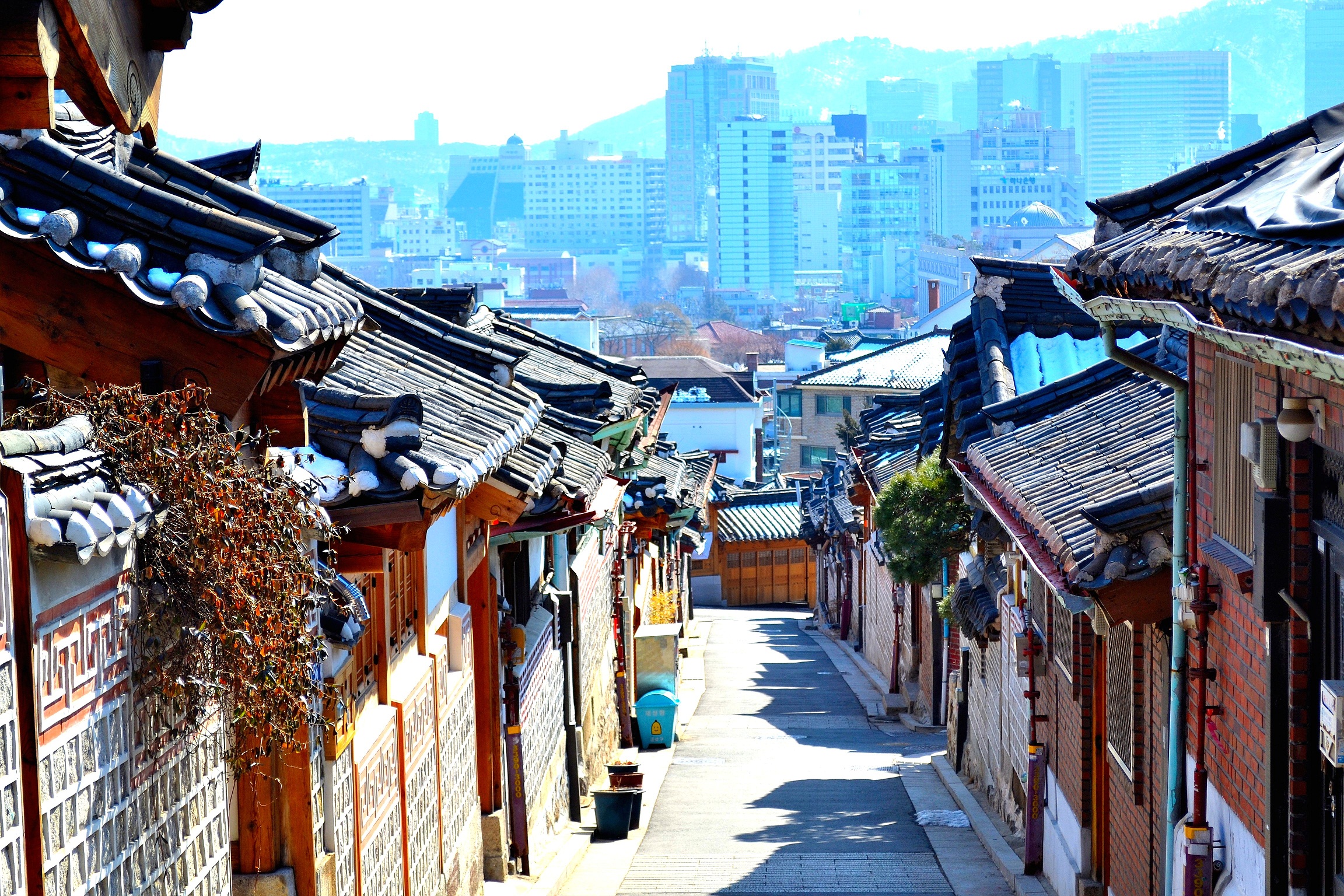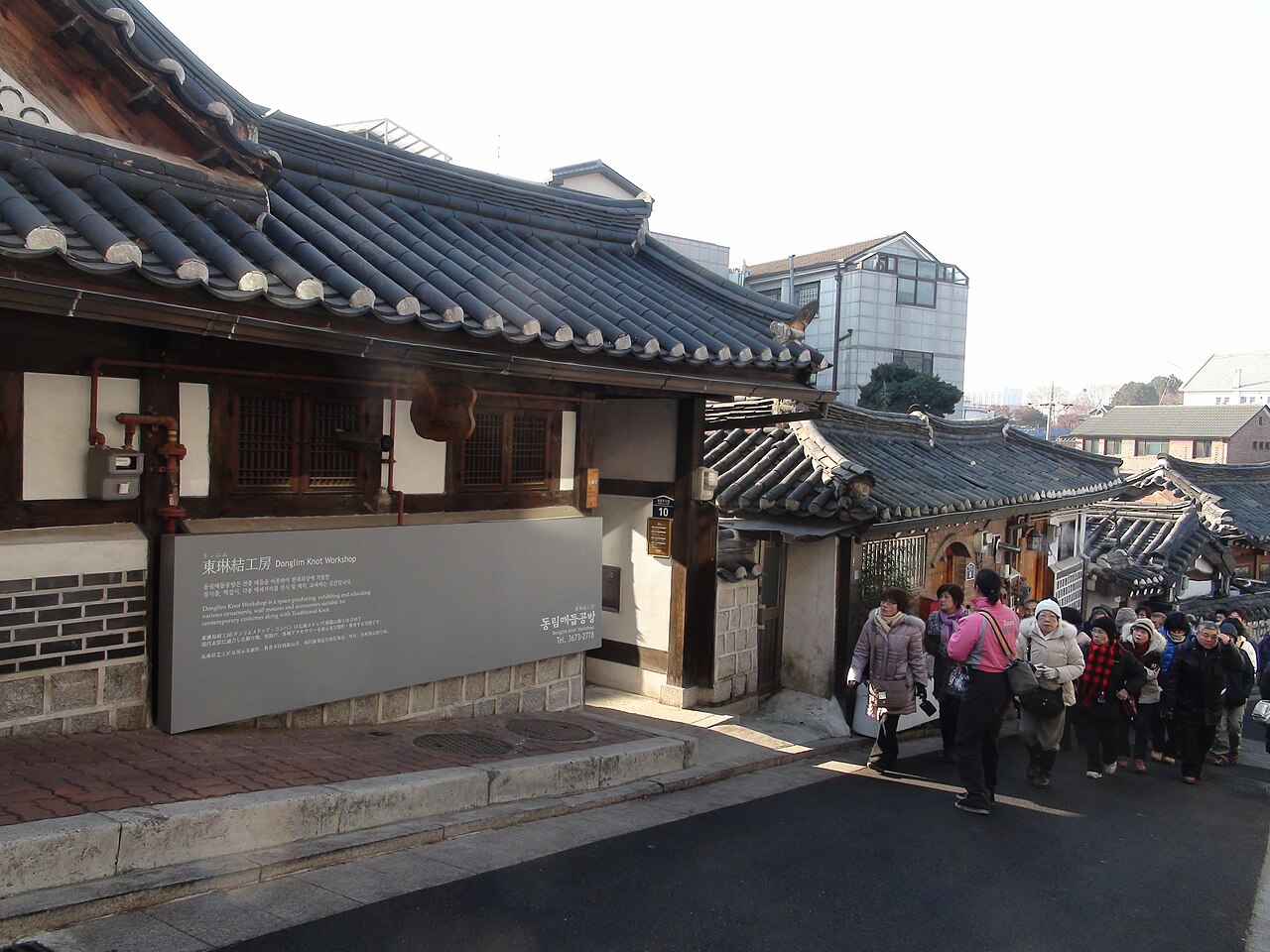Bukchon Hanok Village is a traditional Korean village in Seoul with a rich history. It is situated atop a hill, nestled between Gyeongbok Palace, Changdeok Palace, and Jongmyo Royal Shrine. The village consists of numerous alleys and hanok (traditional Korean houses), and it has been carefully preserved to showcase a 600-year-old urban environment.

Bukchon, which encompasses neighborhoods like Wonseo-dong, Jae-dong, Gye-dong, Gahoe-dong, and Insa-dong, was historically the residential area for high-ranking government officials and nobility during the Joseon Dynasty. It is situated north of Cheonggye Stream and Jongno, giving it the name Bukchon, meaning “north village.”
A survey conducted by the Seoul Metropolitan Government in November 2011, polling nearly 2,000 foreign visitors, revealed that exploring the narrow streets of Bukchon ranked as their fourth favorite activity in Seoul.
According to data from the Bukchon Traditional Culture Center, the area received 30,000 visitors in 2007. However, after being featured in popular television programs like “1 Night 2 Days” and “Personal Taste,” the number rose to 318,000 in 2010. It is projected that the figure will double to over 600,000 visitors in 2012.

A large and stunning hanok was opened to the public in 2015 as part of the Seoul Museum of History. It is situated in an alley at the foot of the hill. Admission to the hanok is free, and visitors can explore the traditional housing within approximately 15 to 20 minutes.
To reach Bukchon Hanok Village, you can head towards Samcheongdong Street, located between Gyeongbokgung Palace and Changdeokgung Palace. The easiest way to get there is by taking the subway to Anguk Station (Seoul Subway Line 3). From exit 3, turn right and walk approximately 200 meters until you see prominent information signs that mark the start of the Bukchon Village Walking Tour. In this Hanok Village, you can participate in a free walking tour that lasts about 2 to 3 hours. The tour takes you to various destinations where you can collect stamps, and at the end, you can receive a keychain as a souvenir.
Within the village, you will find several noteworthy attractions such as the Bukchon Traditional Culture Center, Seoul Intangible Cultural Heritage Center, Donglim Knot Museum, Gahoe Museum, Han Sangsu Embroidery Museum, Bukchon Asian Art Museum, and Owl Museum. These places are highly recommended for a visit during your trip to Korea. Many of the hanoks in Bukchon serve as cultural centers, guesthouses, restaurants, and tea houses, allowing visitors to fully immerse themselves in traditional Korean culture and experience.
The picturesque locations and beautiful architecture of Bukchon Hanok Village offer a glimpse of a bygone era not commonly seen in modern society. It is an amazing place that everyone should visit and enjoy. Many tourists come here to capture memorable photos and to connect with the history that coexists with modern Korea. If you prefer a guided tour, you can make a reservation to help you navigate the trail. There are plenty of activities to do while you’re there. However, it’s important to note that due to the high influx of tourists, the visiting hours were changed in 2018. The village is now open from 9 am to 5 pm from Monday to Saturday, while Sundays are closed to nonresidents.

Currently, there is an issue in Bukchon Hanok Village regarding tourists causing inconvenience and trouble for the residents. There have been reports of residents being yelled at for simply driving their cars on the narrow roads of the village. The residents are understandably unhappy with the overwhelming number of tourists who constantly take photos, as it is negatively impacting their living environment. On average, the village receives approximately 10,000 visitors per day.
Unfortunately, due to the influx of tourists, the number of residents has significantly declined. The resident population has dropped from over 9,000 to 7,530. Many residents feel that the excessive tourism is driving them out of their own neighborhood, which is understandably distressing for them.
Some tourists have likened Bukchon Hanok Village to typical towns in Switzerland, or places like Gatlinburg, Tennessee, or Galena, Illinois in the United States. However, it’s important to remember that the village is a residential area where people live their everyday lives. The constant presence of tourists and their behavior has created challenges and tensions for the local residents, affecting their quality of life.
It is crucial for tourists to be respectful of the residents and their living environment while visiting Bukchon Hanok Village. Being mindful of noise levels, not obstructing traffic or private property, and refraining from invasive photography can help alleviate the negative impact on the residents and maintain the harmony of the neighborhood.






To get there
In Korean : 북촌 8경 (Bukchon pal-gyeong)
Duration of the journey : about 2h40
Website : Bukchon Hanok Guide (site very slow to download)
